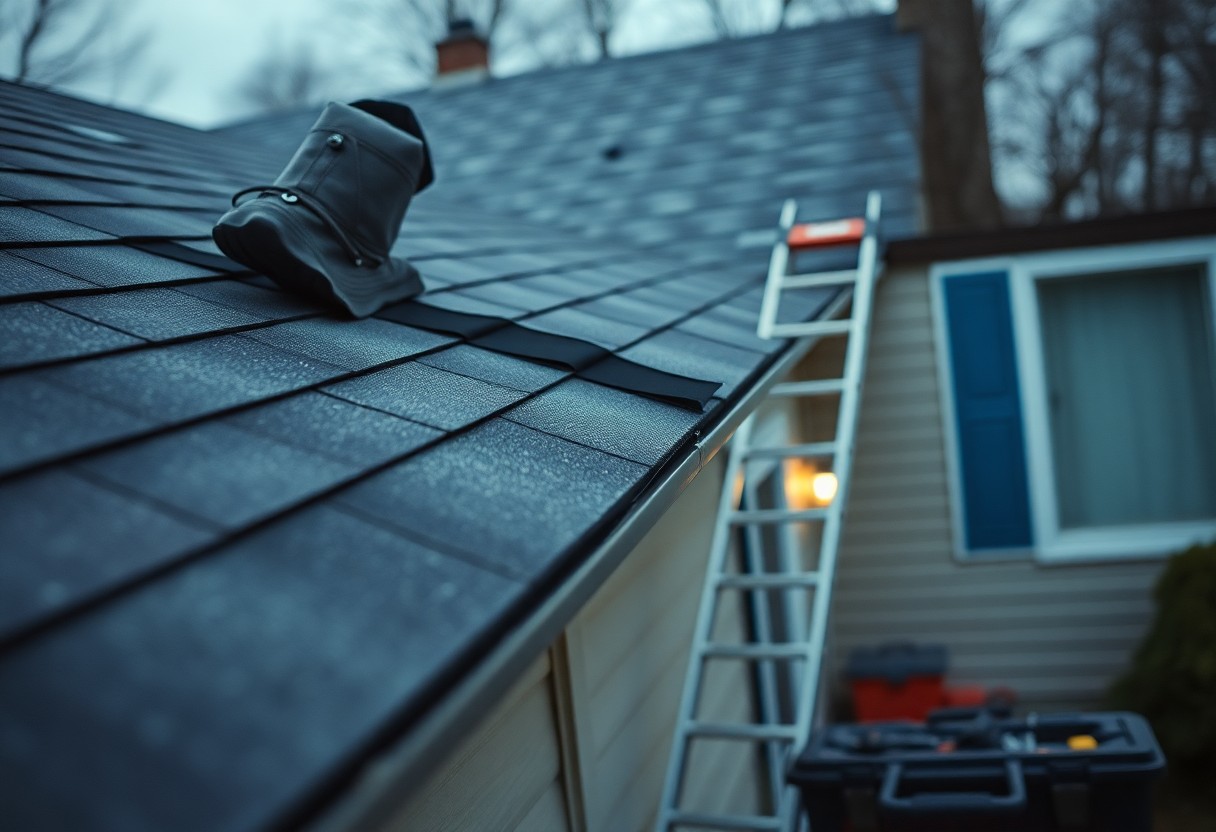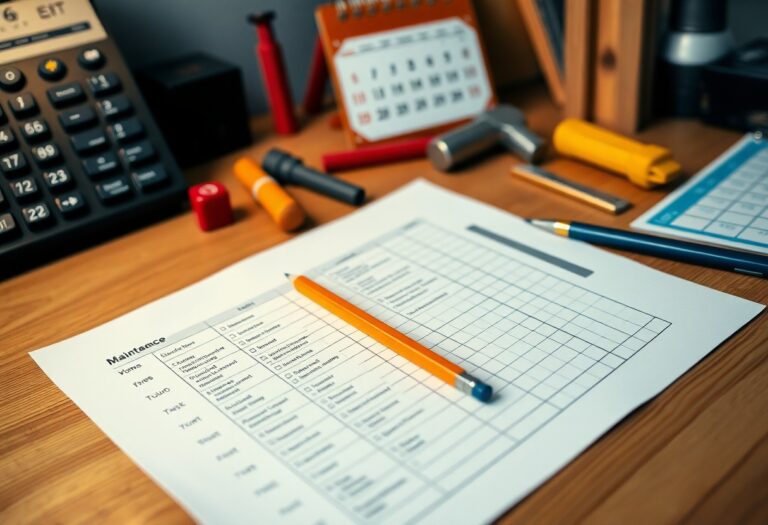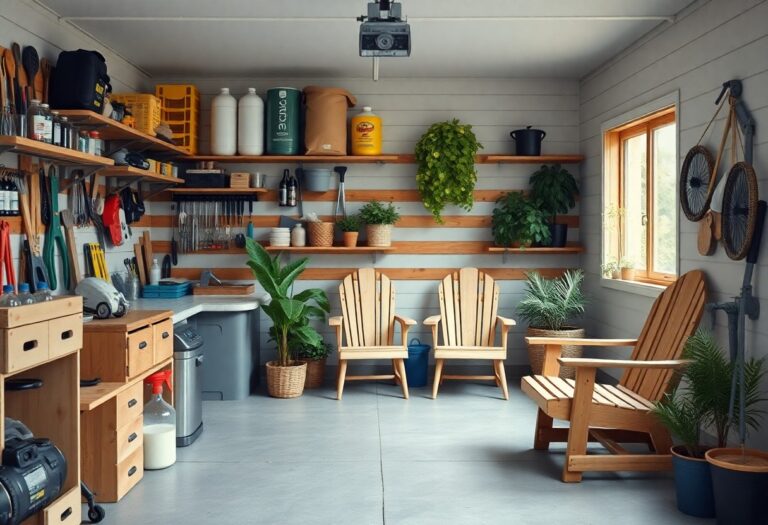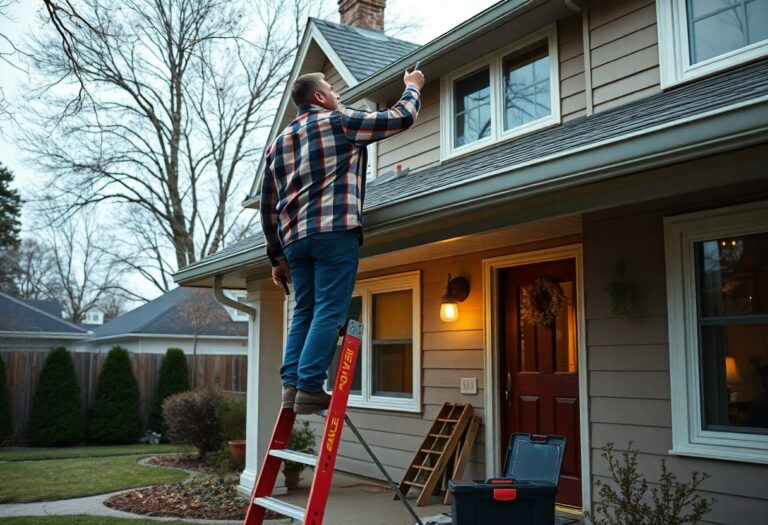Preventative Home Maintenance – How to Spot Issues Before They Become Costly Repairs
Just like regular checkups keep you healthy, preventative home maintenance helps you identify potential issues before they escalate into expensive repairs. In this guide, you’ll learn how to monitor your home for common problems, keeping your space safe and your wallet happy. By taking proactive steps to maintain your property, you can save both time and money while ensuring that your home remains in top condition for years to come.
Understanding the Importance of Preventative Maintenance
The significance of preventative maintenance lies in its ability to save you time, money, and stress. By addressing minor issues before they escalate into major problems, you can extend the lifespan of your home’s systems and appliances. Regular upkeep not only homes ensures a comfortable living environment but also protects your investment by maintaining property value. A proactive approach leads to fewer unexpected repairs and the peace of mind that comes from knowing your home is in good shape.
How to Identify Common Issues
On a regular basis, you should be vigilant for warning signs that may indicate problems lurking in your home. Pay attention to unusual noises, smells, or changes in temperature, as these can be clues to underlying issues. Visual inspections of necessary systems such as plumbing, electrical, and HVAC can also reveal potential concerns before they become expensive repairs.
Tips for Regular Home Inspections
While keeping an eye on your home’s condition, developing a routine for regular inspections can be beneficial. Create a checklist of areas to assess, including your roof, gutters, plumbing, and appliances. Make it a point to schedule inspections at least twice a year, and after major weather events. This proactive approach allows you to catch problems early and make timely repairs.
- Check for leaks under sinks and around toilets.
- Inspect basements and attics for signs of moisture or mold.
- Evaluate insulation and weatherproofing around doors and windows.
- Look for cracks in the foundation and exterior walls.
Assume that identifying these issues will help you keep your home in top condition.
How to implement these regular inspections is key to maintaining your home. Taking a systematic approach allows you to identify overlooked areas and prioritize repairs. Start by creating a seasonal schedule to ensure everything is covered throughout the year. Include both indoor and outdoor spaces in your checklist to get the full picture of your home’s health.
- Document any issues you find for reference.
- Involve family members in inspections for additional insights.
- Consider hiring professionals for major systems like HVAC or roofing.
- Use visuals or apps to help you perform inspections more effectively.
Assume that frequent checks will enable you to maintain a safe and healthy home environment.
Seasonal Maintenance Checklist
Some tasks should be performed seasonally to keep your home in top condition and avoid significant repair costs down the line. This checklist ensures that you’re proactive in spotting anything that may need attention. Regular maintenance not only enhances your home’s longevity but also contributes to a safe and comfortable living environment. Prioritizing these tasks will deliver peace of mind and protect your investment.
How to Prepare Your Home for Winter
Little adjustments in preparation for winter can lead to substantial savings on energy bills and prevent hazardous situations. Start by sealing any drafts around windows and doors, and ensure your heating system is serviced. Don’t forget to clean your gutters and remove any debris from your roof.
Tips for Spring and Summer Upkeep
How-to maintain your home during the warmer months involves a mix of outdoor and indoor tasks. Focus on your lawn and landscaping, check for any leaks or mold in humid areas, and service your air conditioning units. Completing these tasks will help you enjoy the sunny days without the worry of unexpected repairs. Make it a point to do the following:
- Inspect and repair fences and decks.
- Check for signs of pests both indoors and outdoors.
- Clean and store seasonal equipment properly.
Knowing how to tackle maintenance tasks early in the season can save you time and money over the long run.
Another effective strategy for your spring and summer upkeep is to regularly assess your exterior paint and siding. A well-maintained exterior not only improves curb appeal but also protects your home from the elements. Pay special attention to any visible wear and tear, and consider power washing to remove dirt and grime. Here are some additional tips:
- Inspect your roof for loose or missing shingles.
- Fertilize your lawn and maintain garden beds to promote growth.
- Check your downspouts to ensure proper drainage.
Knowing the signs of wear and keeping up with maintenance can prevent bigger issues later.
Inspecting Key Areas in Your Home
One of the best ways to avoid costly repairs is by regularly inspecting key areas in your home. By keeping an eye on these areas, you can spot potential issues before they escalate. Focus on critical components such as plumbing, roofing, and gutters, as these are imperative to your home’s functionality and integrity.
How-to Check Plumbing Systems
Check for leaks by examining visible pipes and fixtures for moisture or water stains. Don’t forget to inspect under sinks and around toilets. Also, pay attention to your water bill; a sudden increase can indicate a hidden leak. Lastly, ensure that your water heater is functioning properly and checking the pressure relief valve to prevent any mishaps.
Tips for Roof and Gutter Maintenance
Inspecting your roof and gutters will help prevent water damage and prolong their lifespan. Regularly clean your gutters to avoid blockages and check your roof for missing or damaged shingles. Additionally, look for signs of wear around flashing and vents.
- Clear debris from gutters and downspouts.
- Look for missing or damaged shingles and replace them promptly.
- Inspect for signs of mold or mildew, which can indicate trapped moisture.
Recognizing these issues early can save you from significant repair costs down the road.
Understanding the importance of maintaining your roof and gutters will protect your home from water intrusion and structural damage. Regularly checking these areas, especially after storms, will ensure they remain in optimal condition.
- Schedule seasonal inspections to keep track of wear and tear.
- Use a ladder carefully or consider hiring a professional for a thorough assessment.
- Invest in gutter guards to minimize debris buildup.
Recognizing the signs of wear early can help preserve your home’s exterior and prevent costly repairs later.
Recognizing Warning Signs
Once again, being proactive in home maintenance involves keen observation. Look for subtle signs that something may be amiss, such as unusual sounds, unexpected odors, or changes in your home’s structure or environment. Notice peeling paint, damp patches, or cracks in walls, which can indicate deeper issues. By identifying these warning signs early, you can often address problems before they escalate into expensive repairs.
How to Spot Unseen Damage
You should regularly inspect less visible areas of your home to catch unseen damages. Check behind appliances, under sinks, and within crawlspaces for signs of leaks, mold, or pest infestations. Utilizing tools like a moisture meter can also help you detect hidden moisture issues in walls and floors, enabling a proactive approach to home maintenance.
Tips for Monitoring Indoor Air Quality
For maintaining good indoor air quality, you should create a plan that includes regular inspection and upkeep of ventilation systems. Here are some key tips:
- Change air filters every 1-3 months.
- Keep humidity levels between 30-50%.
- Use exhaust fans in kitchens and bathrooms.
This ensures you are taking the necessary steps to improve the air you breathe and reduce potential health risks.
Damage to your indoor air quality can be caused by a variety of factors, including mold, allergens, and improper ventilation. To ensure a healthy environment, consider the following additional steps:
- Invest in an air purifier.
- Regularly clean areas where dust can accumulate.
- Insulate and seal your home to prevent outdoor pollutants from entering.
This will help create a more comfortable and healthy living space for you and your family.
Tools and Resources for Home Maintenance
Unlike what many homeowners believe, maintaining your home does not require a massive investment in tools. Instead, having a basic set of reliable tools and access to dependable resources can significantly ease your maintenance tasks. Online platforms, instructional videos, and forums offer fantastic guidance, while vital tools like hammers, screwdrivers, and wrenches can help you tackle common repairs effectively. Investing in a quality toolkit will empower you to address issues before they escalate into costly repairs.
How to Choose the Right Tools
While selecting the right tools for your home maintenance needs, consider versatility, durability, and comfort. Prioritize tools that can serve multiple purposes, ensuring you get the best value for your investment. Look for reputable brands that offer reliable warranties, and don’t hesitate to test tools in-store for optimal comfort. This approach will enhance your effectiveness in tackling various maintenance tasks.
Tips for Utilizing Professional Services
To make the most of professional services, follow these guidelines:
- Research local professionals and read reviews to find reputable contractors.
- Get multiple quotes to ensure you understand the market price for services.
- Ask for recommendations from friends or family who have had similar work done.
- Communicate your expectations clearly to avoid misunderstandings.
Thou can save time and money by making informed choices regarding professional help.
It helps to have a clear idea of the specific services you need before contacting professionals. This allows you to assess their expertise and ensure they’re the right fit for your project. Don’t hesitate to ask questions regarding their experience and processes. Here are a few tips:
- Inquire about their licensing and insurance to ensure proper protection.
- Request references from previous clients for added assurance of quality.
- Establish a clear timeline and budget to keep the project on track.
- Maintain open lines of communication throughout the project for updates and progress.
Thou shall find that proper preparation makes for smoother and more successful professional interactions.
Budgeting for Home Maintenance
To ensure that your home remains in top condition, it’s imperative to allocate funds specifically for maintenance. By establishing a budget for home upkeep, you can prevent larger, unexpected expenses and tackle smaller repairs proactively. This approach helps you maintain your property’s value and avoid financial strain when issues arise.
How-to Create a Maintenance Budget
Budgeting for maintenance begins with assessing your home’s needs and estimating potential costs. Identify key areas that require regular attention, such as plumbing, roofing, and appliances. A general guideline is to save 1% to 3% of your home’s value each year for maintenance. Track your spending and adjust your budget annually based on home condition and local market trends.
Tips for Saving on Repairs
You can significantly reduce repair costs by following a few strategic tips. Regular maintenance can extend the life of your home systems and save you from costly emergencies. Consider these money-saving measures to enhance your budget:
- Perform seasonal checks on imperative systems and appliances.
- Learn basic DIY skills to tackle minor repairs yourself.
- Seek multiple quotes before hiring contractors.
- Invest in quality materials to avoid frequent replacements.
After assessing these factors, you’ll find more financial flexibility in your maintenance budget.
How-to save on repairs involves being proactive about preventive measures and honing your skills. Engage in simple tasks like changing air filters and cleaning gutters to prevent larger issues. Stay informed about local regulations and safety codes, as compliance can save you from fines and repairs down the road:
- Keep a maintenance checklist to stay organized.
- Network with contractors for discounts on repeat services.
- Take advantage of seasonal sales for tools and supplies.
- Join community workshops to learn home repair skills.
After implementing these strategies, you will be better equipped to handle repairs efficiently.
Final Words
So, by implementing regular preventative home maintenance, you can significantly reduce the risk of costly repairs down the line. Pay close attention to signs of wear and tear, and conduct routine inspections in key areas such as plumbing, roofing, and electrical systems. Developing a proactive approach enables you to identify small problems before they escalate, saving you both time and money. Your home is your sanctuary, and maintaining it not only enhances its value but also ensures a comfortable living environment for you and your family.







